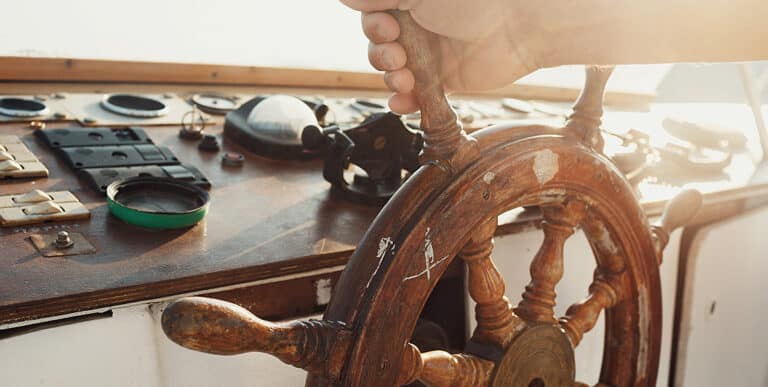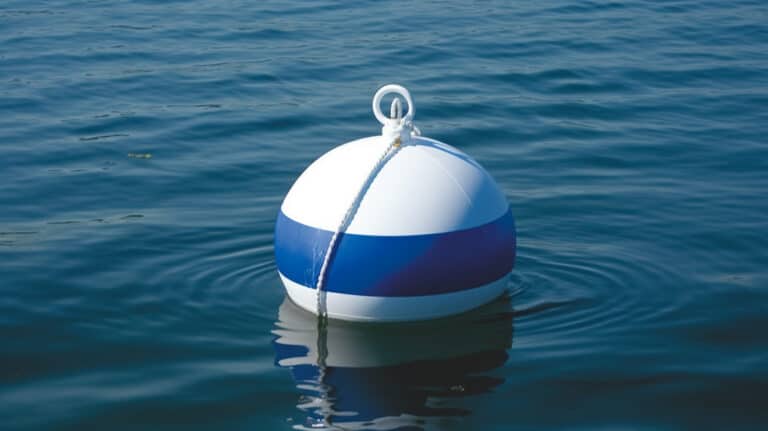If you have experience with guns, then you’ll know that they should be unloaded and be placed on safety before being put away for storage. Well, the same applies to how should firearms be transported in a boat.
With that said, there is much more to firearm transportation on vessels than this.
Most importantly, you should ensure proper storage conditions so that your gun stays in working condition throughout the journey.
Next, there are also some legal questions connected with guns. What happens if you reach international waters? What if you are in the waters of another country? Are you allowed to possess firearms on a boat in these cases?
If these are the questions that are bugging you today, read on – this blog have all the answers!
The Three Goals of Proper Firearm Transportation
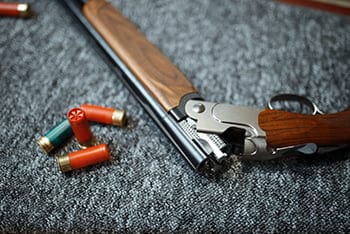
Going forward, we should understand why you would want to ensure proper transportation of firearms on a boat. Well, here are three big reasons for that:
- You want to avoid accidents. The first thing that will come to most of our readers’ minds is that firearms should be transported properly to avoid accidents. This is indeed a very serious reason to be careful with firearms on board, but it isn’t the only one.
- You want to prevent others from accessing the firearm. If you have kids on the boat, then they are likely to want to play with your gun. Aside from that, you should not allow intruders or anyone else on the boat to gain possession of your firearms.
- You want your firearm to stay in top-notch condition so that you can use it when needed. If you do not store your firearm and its ammunition properly, then you may not be able to use it when needed.
When outlining our tips on proper gun transportation, we will be based on these three points. We will cover the transportation of both guns and ammunition for a fuller picture.
How Should Firearms be Transported in a Boat?
There is one key rule for safe transportation of any firearm – there should be no live rounds in the gun. If there are no live rounds inside a gun’s chamber, then there is zero chance that it will fire.
Clearing the Firearm
Each firearm will have its own procedure for “clearing” – that is, unloading it fully for safe storage. If you own a firearm, then you should know how to safely clear it. If you do not know how to do it, then you should not own a gun.
With that said, if you’ve just purchased yourself a firearm and don’t know how to clear it safely, here’s how it’s generally done:
- Remove the magazine from the gun.
- Pull the charging handle of the gun all the way back. If there are any rounds in the chamber, they should be ejected.
- Keep the charging handle back and confirm that there are no live rounds in the chamber.
- Be very attentive at this step. If you haven’t pulled the charging handle all the way back, then the round may not have left the chamber. Additionally, there may also be a round stuck in the chamber – despite being stuck, it can still fire.
- Confirm that there are no live rounds visually. Additionally, stick your finger inside the chamber to have a tactile confirmation.
- In the military, instructors usually advise pulling the trigger after emptying the chamber to make sure that the gun is empty. While pulling the trigger allows you to finally confirm that the gun does not have live rounds, you should only do it in a location where you cannot injure anybody.
The safest place of test-pulling the trigger is a shooting range – if you are anywhere else, don’t do it since you may accidentally injure someone. Don’t fire at the ground since the bullet may ricochet, and do not fire in the air since the bullet can stay lethal even at great distances. - Engage your gun’s safety mechanism.
But Wouldn’t I be Safer if I Stored My Gun Loaded?
If you are taking a firearm along for emergencies, then it might cross your mind that transporting loaded guns is more optimal.
Well, maybe, but guns are NEVER stored loaded, even in the military. Any firearm is unloaded before storage to avoid accidents.
Although unintentional discharge due to shock or impact is extremely rare in firearms, it can still happen. Not only that, but if someone – especially children – does get their hands on your gun, they may accidentally fire it.
Storing the Firearms on Boats
Should You Disassemble Your Gun for Storage?
Once your gun is fully unloaded, you should prepare it for storage.
- Water and dust protection. You probably want to be able to take your gun out and use it quickly in emergencies. To this end, your firearm should stay pristine in storage.
- Lockability. Your case should be lockable to ensure that no one but you can access the firearm.
- Anchoring points. Your boat will be jumping around waves, so your gun case is likely to go overboard during the journey. The gun case should have some tie-down points to prevent this
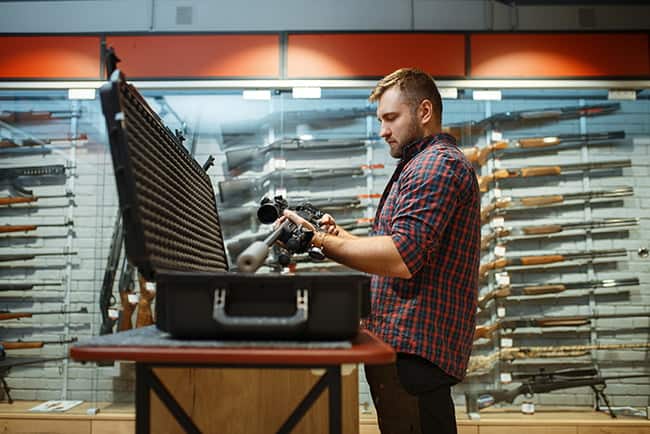
Gun safes are more secure than gun cases – they are very difficult to break open. However, you probably will not find a gun safe that is water- and dust-proof, so you should combine a good gun safe with a good gun case for the best results.
Additionally, in emergencies, you will have to spend more time to open your gun safe and take the gun out.
Some people prefer to also disassemble their guns before putting them into storage. Whether or not you should do this depends on what you are expecting from your journey.
If you are afraid that you will be attacked by pirates, then you shouldn’t disassemble your gun. You should minimize the number of steps necessary to shoot a gun in emergencies – of course, while keeping your gun unloaded and on safety.
If you are not intending to use your firearm during the journey, then you may disassemble it. Disassembling is good for storage efficiency, and arguably, it also adds an extra layer of safety. Though if there are no live rounds in your gun, it’s not going to fire whether assembled or disassembled.
Placing the Gun in a Secure Location
Now, once your gun is in its dedicated case, where you should place it? Here are a few tips for you:
- The gun case should be placed in the boat’s front.
- The gun barrel should be facing the direction the boat is moving in. That is, the firearm should be facing away from you and passengers.
- You and all your passengers should be sitting behind the firearm.
If you have multiple firearms, then you have two options:
- If you can safely place other firearms next to the first one, then do so. Again, make sure that all your firearms are facing away from everybody.
- Alternatively, place the second firearm in the back of the boat. The gun should be facing opposite the boat’s direction – again away from all passengers. If there are two people on your boat – you and a passenger – the passenger should sit behind the gun and face the direction opposite the boat’s movement.
If you are going to use a gun safe, then it should be placed in a cabinet or cupboard where it will be away from the eyes yet will stay easily accessible when necessary.
What About Ammo?
Existing online guides miss one crucial point with firearm transportation – ammunition. You probably are taking both a firearm and ammunition with you – without each other, they are worthless.
Ammo should be stored properly because it can easily go bad. An ideal storage location for ammo should be:
- Dark.
- Cool.
- Dry.
Ideally, you should store your ammo in the packaging that it was sold in.
Arguably, storing ammo properly is more important than storing your firearms. A gun cannot shoot without ammo – however, ammo can theoretically spontaneously shoot without a gun.
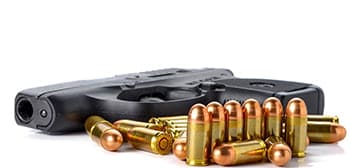
With that said, even if ammo does blow up, it is very unlikely to injure you. When you pull your gun’s trigger and ignite the powder propellant, the pressure of expanding gas pushes the bullet through the barrel.
Within the limited space of the barrel, gas exerts a high amount of force into the bullet, significantly accelerating it. But outside of a barrel, the effect of the gas on the bullet will be reduced
Furthermore, the only way for a round to spontaneously fire is for the primer at the back of the bullet to be hit at a right angle.
With that in mind, guns are safe when unloaded, while ammo has an astronomically low chance of exploding and injuring anybody. So when it comes to firearm transportation, to ensure safety, your key task is to make sure that your firearm is unloaded and kept separately from the ammo.
Can You Carry a Gun on a Boat? Guns on Boats Laws
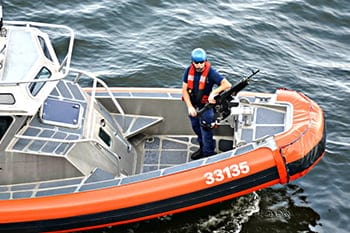
We should also cover the legal aspects of carrying a gun on a boat. Laws differ depending on whether you are in US waters, international waters, or waters of another country.
In short, here’s what you should know about the legality of firearms on boats:
- If you are in US waters. In the US, the Second Amendment to the US Constitution protects the right of Americans to own and bear firearms. However, laws vary from state to state, so make sure to do more research to find out whether there are any special cases or rules in your area.
- If you are in international waters. Once you are 24 nautical miles (27.62 miles) away from any coastline, you are in international waters. In international waters, you are under the law of the country your vessel is registered in and the country whose flag your ship displays.
- If you are in the waters of another country. The legality of firearm possession will depend on the laws of that country.
Frequently Asked Questions
Is it Legal to Carry a Gun on a Boat?
Carrying firearms is legal throughout most of the US and in international waters. In the waters of another country, legality depends on local laws.
Can You Have a Gun on Your Boat in International Waters?
If a vessel is registered in the US or is US-flagged, then it is governed by the laws of the US, which do allow individuals to possess firearms.
Can You Shoot Guns on a Boat?
This will depend on where you are. Discharging a weapon from a boat may be allowed with special conditions – e.g. the motor has to be turned off.
How Should Firearms be Transported in a Boat – Conclusion
With that, the answer to the question “how should firearms be transported in a boat” is as follows – unloaded, with the safety on, in a gun case or safe, and with the ammo in a separate location.
No matter why you are taking firearms on board, make sure to be responsible and maintain gun safety procedures.
References
- The U.S. Constitution – Second Amendment
- The U.S. Immigration and Customs Enforcement – Guidance for U.S. Persons Traveling Outside the U.S. with Firearms and/or Ammunition
- Justia.com – Maritime and Admiralty International and Federal Laws



